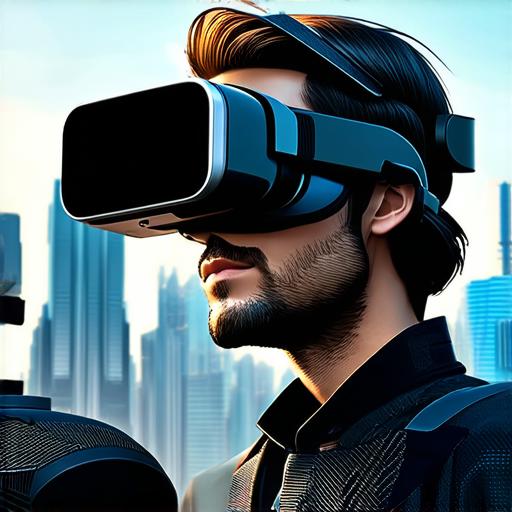Virtual Reality (VR) and Augmented Reality (AR) are two emerging technologies that offer immersive experiences to users. While both have some overlap, they have fundamental differences that set them apart. In this article, we will explore what makes VR and AR unique and their potential applications in various industries.
What is Virtual Reality?

Virtual Reality is a computer-generated simulation of a 3D environment that can be interacted with using specialized hardware such as headsets, gloves, and controllers. The immersive experience created by VR allows users to feel like they are in a different world, surrounded by a realistic and interactive environment.
One of the main advantages of VR is its ability to create a completely artificial environment that can be customized to suit specific needs. This makes it ideal for training simulations, gaming, and other applications where a realistic and interactive experience is essential. For example, surgeons can use VR to practice complex procedures without risking patient safety.
Virtual Reality also offers the potential for social interaction in a virtual world. Platforms like VRChat allow users to interact with each other in a virtual space, creating new opportunities for socializing and collaborating.
What is Augmented Reality?
Augmented Reality, on the other hand, is a technology that superimposes digital information onto the real world. AR uses sensors and cameras to track the user’s position and orientation in the physical world, then overlays digital objects and information onto the camera feed. This creates an interactive experience where the user can see and interact with virtual objects in the real world.
AR has a wide range of applications, from retail to education to gaming. For example, AR-enabled shopping experiences allow customers to try on clothes virtually before making a purchase. Similarly, AR-based educational tools can enhance learning by providing interactive and engaging content that is overlaid onto the real world.
One of the key benefits of AR is its ability to provide contextual information without requiring the user to leave the physical world. For example, a history app could use AR to provide additional information about a building or monument when the user points their phone at it.
Comparing VR and AR
While both VR and AR offer immersive experiences, they have some key differences that set them apart. One of the main differences is the level of immersion. While VR completely immerses the user in a virtual world, AR overlays digital information onto the real world, creating a hybrid experience.
Another difference is the potential for social interaction. While VR offers the potential for socializing in a virtual world, AR allows users to interact with each other and the physical world in real-time. This makes AR more suitable for applications that require real-world collaboration and communication.
In terms of hardware requirements, VR typically requires specialized equipment such as headsets, gloves, and controllers, while AR can be experienced using a smartphone or tablet with a camera. This makes AR more accessible to a wider audience.
Finally, the potential applications for VR and AR are different. While VR is primarily used for training simulations, gaming, and other immersive experiences, AR has a wide range of applications in retail, education, and gaming.
Examples of VR and AR in Action
To illustrate the differences between VR and AR, let’s look at some real-life examples of both technologies in action:
